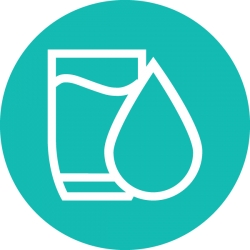Background:
Water is an essential but limited resource. Because water sustains nearly everything Utahns hold dear, there are competing demands for the state’s precious water supply. Utahns want water to be plentiful, readily available, and affordable in order to support food production, community growth, and economic development. They also desire to be good stewards of the environment and want an abundance of clean water available to sustain their natural surroundings.
As Utah adds another 2.5 million people by 2050, more water will be needed to support the population growth. These water supplies can come from some combination of three sources: conservation, local water projects (including conversions from agriculture to urban use), and large regional water projects. Utahns are willing to significantly reduce how much water they use, but they do not want new water supplies to diminish their ability to produce food in Utah or to come at the expense of wildlife or recreation. With careful planning and stewardship, Utahns can have enough water to support agriculture, wildlife, and recreation and still provide sufficient water to meet the needs of growing communities.
We need water to drink, grow food, generate power, make essential products, provide jobs, attract businesses to Utah, support recreation and tourism, and sustain the natural environment. With an arid southern region, Utah averages out to be the second driest state in the nation. In addition, the state receives very little moisture during the summer months compared to other places like Phoenix and Albuquerque. As a result, green yards, parks, and farms in Utah require more water. As the population grows by another 2.5 million people, Utahns will have to carefully plan and make hard choices about how to supply sufficient water to expanding cities and towns. These choices will also determine if there is enough water to promote jobs and economic development, feed the growing population, and protect the environment. In addition to the challenges of growth, the water infrastructure that serves the present population will need to be repaired and replaced at rates and at a cost never before experienced. For these reasons, water is among Utahns’ top concerns when they look to the future.
Providing water to an additional 2.5 million people will require increasing the state’s water supply through some combination of different methods:
- Reducing per capita water use.
- Developing local projects such as wells, conversion of agricultural land and water to urban uses, additional storage, artificial groundwater recharge, treatment plants, pipelines, and watershed improvements.
- Building the two larger projects that would divert water from the Bear and Colorado Rivers. Because these two rivers flow through multiple states, these states have entered into agreements that divide the water among them; these projects would utilize Utah’s remaining allocations from these rivers.
Reducing the amount of water used for homes, landscaping, and businesses can delay the need for new water development projects. Utahns currently use about 240 gallons of water per person each day for homes, yards, and businesses. Governor Herbert has set a statewide goal to use 25% less water per person by 2025 from 2000 levels. Utah has made significant strides in reaching this goal. Most areas of the state are already conserving 15% or more. In parts of southern Utah, conservation levels have reached 35%.
Some water for communities will likely come from agricultural lands. When agricultural lands are sold for urban development, the city or water agency in which the development occurs typically acquires the water used on that land. If Utah continues to grow as it has over the past 20 years, the state could lose up to 13% of its irrigated agricultural land by 2050, including 45% of Utah’s land used to grow fruits and vegetables and 60% of Utah’s orchards. Much of that land is prime farmland along the Wasatch Front with soils and climates that don’t exist elsewhere in the state. Converting too much agricultural water to urban use will therefore erode Utahns’ ability to provide food to the state’s growing population. In addition, treating agricultural water to make it suitable for human consumption can be expensive.
As we plan our water supplies for existing and new users, Utahns must also plan for periods of drought and climate variability. Utah frequently experiences droughts that last for years. Although snowpack currently provides most of Utah’s water storage, climate models from Utah State University predict that northern Utah may become warmer, causing more precipitation to fall as rain instead of snow. Even though overall precipitation may remain the same, Utahns’ water storage in snowpack will decrease. These same climate models also predict that southern Utah could become warmer and drier. As the state’s climate changes, developing additional storage and maintaining healthy watersheds to absorb and slowly release water will become increasingly critical.


